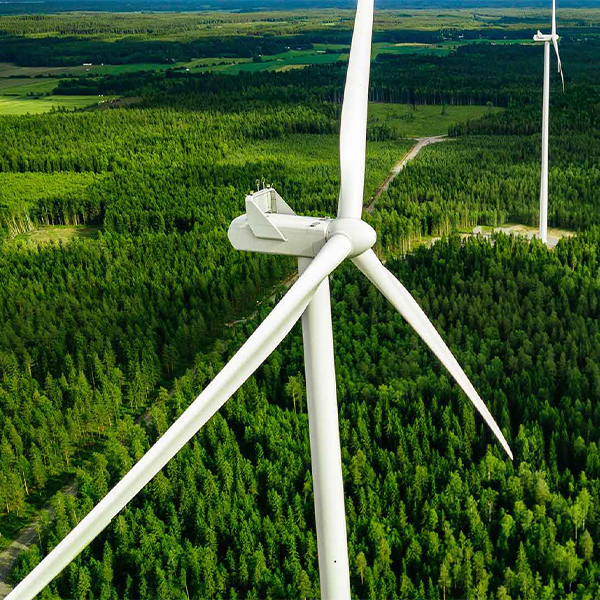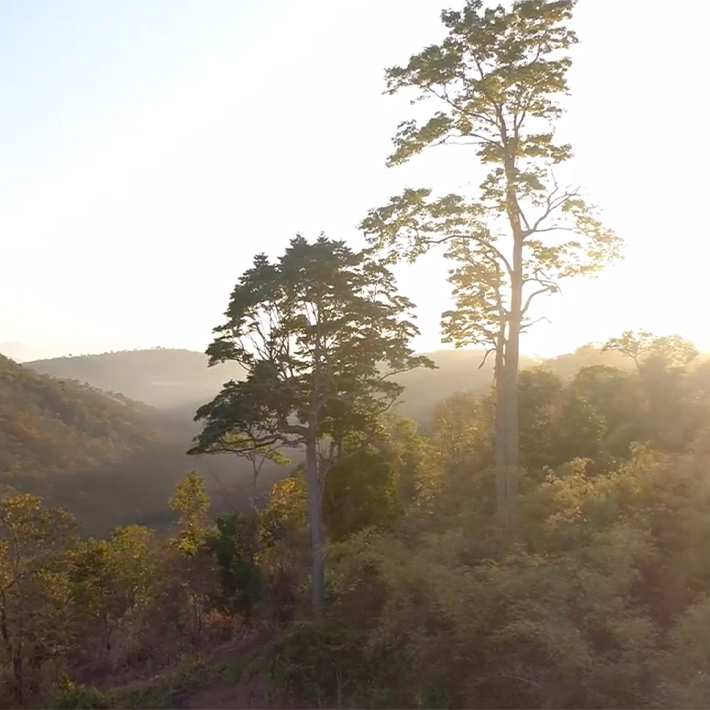
Carbon removal & carbon neutrality
Taking action for net-zero operations
The carbon removal market is the key to meeting net-zero commitments, once science-based targets for reducing emissions have been met. The Zurich Insurance Group (Zurich) recognizes the need for urgent action to help accelerate carbon removal market growth and aims to inspire other companies to take similar action by supporting emerging solutions and being transparent about our approach.

A carbon removal certificate is an independently verified document that confirms that 1 metric ton of CO2-equivalent (CO2e) has been removed from the atmosphere and stored for the long-term using a verified removal method. The certificate is issued to the supplier and purchased by a buyer who wants to remove their residual emissions in a credible way. The certificate must be retired, ideally as close to the purchasing time frame as possible, to ensure a unique and credible carbon removal claim.
Carbon removal certification schemes are still under development by various organizations and so certificates are not widely available. However, Zurich has so far sourced carbon removal certificates issued by Puro.earth which certifies companies operating carbon net-negative processes or products based on the Puro Standard. Removal is independently verified by a third party and CO2 Removal Certificates (CORCs) are issued through the Puro Registry. Our engagement with Puro.earth enables us to learn more quickly about emerging best practices. This is important in terms of calculation methodologies, auditing, understanding claims of permanence and ongoing project monitoring in an emerging industry that currently lacks globally consistent quality-assurance frameworks. Where removal solutions do not fall under the Puro.earth certification standard, we require projects to demonstrate strong scientific credentials such as a documented life cycle analysis.
We have also sourced carbon removal certificates issued by Plan Vivo and Verra. Plan Vivo is a certification body that certifies projects against the Plan Vivo Carbon Standard (PV Climate) for community and smallholder land-use and forestry projects. Certified PV Climate projects can issue Plan Vivo Certificates (PVCs). Each PVC represents one metric ton of CO2e emission removal alongside other non-carbon benefits (climate adaptation, biodiversity protection, water provision, etc.). Verra operates the Verified Carbon Standard (VCS) Program and once certified, projects are eligible to be issued Verified Carbon Units (VCUs), with one VCU representing one metric tonne of carbon dioxide removed from the atmosphere.
Where removal solutions do not fall under an independent certification standard, we require projects to demonstrate strong scientific credentials such as a documented life cycle analysis.
We are adopting this approach to eliminate at least the same amount of CO2e as we produce by 2030 onwards.
Besides agreements for the supply of carbon-removal certificates from established projects, Zurich also has agreements in place with some early stage but highly promising carbon-removal suppliers. The majority of our agreements are pre-purchase agreements whereby Zurich agrees to purchase, and even pay in advance, to secure carbon removal certificates that have not yet been produced.
Our pre-purchase agreements provide advance funding to projects so that they can get up and running or scale up. We manage risks by carrying out extensive due diligence and monitoring the progress our suppliers make against pre-agreed milestones.
Through our pre-purchasing agreements, we aim to ramp up our supply of carbon-removal certificates to eliminate the same amount of CO2e as we produce 2030 onwards.

No time to wait
We are getting active in carbon removal markets now so that by 2030 and onwards we are ready to eliminate at least the same amount of CO2e that we produce.
We believe by accelerating our net-zero targets for our operational emissions from 2050 to 2030, we are underlining the urgency to achieve significant emissions cuts and the need to scale up investments in removal solutions now.
The Intergovernmental Panel on Climate Change (IPCC) has made it clear that achieving net-zero means reducing emissions as much as possible, as well as balancing out any that remain by removing an equivalent amount.
The report1 finds that limiting global warming to 1.5°C would require “rapid and far-reaching” transitions in land, energy, industry, buildings, transport, and cities. Global net human-caused emissions of carbon dioxide (CO2) would need to fall by about 45 percent from 2010 levels by 2030, reaching ‘net zero’ around 2050. This means that any remaining emissions would need to be balanced by removing CO2 from the air.
The urgency of the situation means we need to be proactive and help scale up the carbon removal industry, which is still in its infancy.
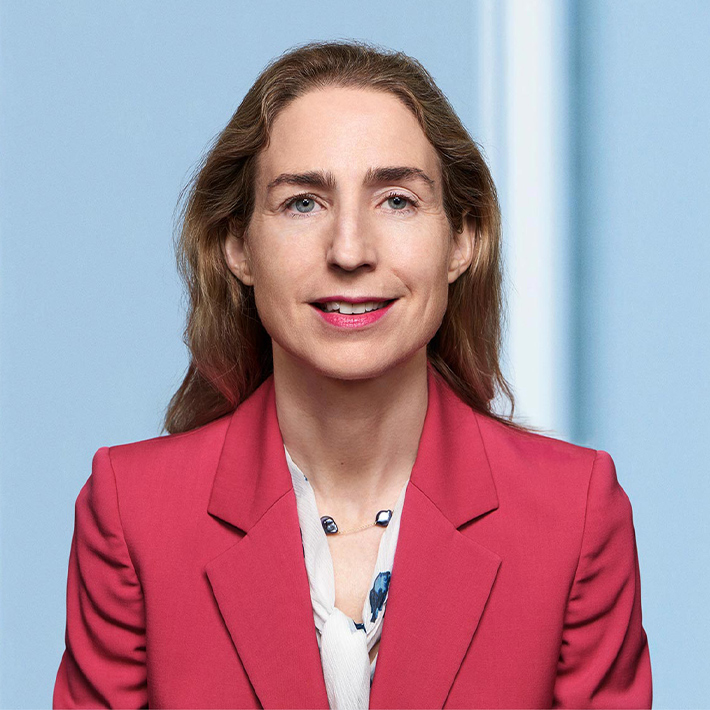
Solutions we support
Zurich initially focused on nature-based solutions, such as biochar and biomass burial, in its first steps towards net-zero. Since then, we have signed our first pre-purchase agreement with the tech-based removal company, Climeworks, leveraging direct air capture. We have also started to support an agroforestry project, bringing reforestation into our carbon removal portfolio. Having a diversified portfolio of removal supply enables risk mitigation for Zurich, while helping develop the varied market solutions needed for a net-zero future. Both nature and technology-based solutions play important roles in decarbonizing our planet.
Supporting carbon removal solutions
Zurich’s approach to net-zero is to identify some of the most promising suppliers of carbon removal and provide capital to enable them to scale up. The goal is to support these companies to develop now so they can help take Zurich over the line to net-zero in the coming years, though there is an element of risk involved in supporting such early-stage projects.
In our view, a range of carbon-removal solutions will be needed for the world to achieve net-zero. No single solution can solve the challenge alone. Solutions leveraging nature or cutting-edge technology, or hybrid solutions will all be required.
Our projects and partners
Biomass Burial
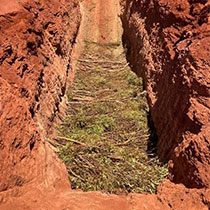
On degraded, low rainfall and previously cleared farmland in Western Australia, InterEarth plants native trees that deal well with the arid environment, allows them to grow, harvests them and then buries them underground in a sealed cavity. The aim is to permanently store the carbon captured within the biomass.
The company is proceeding with a formal pilot designed to prove that this method works as a method of carbon removal.
GECA Environnment

GECA Environnement is a Canadian consulting firm which specialises in biochar and its production.
The firm provides technical and market consulting services to the biochar industry on the development of their project, their growth and their business, including in the carbon market. GECA supports carbon project development, certification, marketing and sale of carbon removal certificates.
Carbon removal standard and marketplace

Puro.earth is a Finnish company, majority owned by Nasdaq, which provides the Puro carbon removal standard and a B2B marketplace to match companies that lock away carbon dioxide in environmentally sound processes for the long term with companies that have pledged to get to net-zero.
Puro.earth sells independently verified CO2 removal certificates (CORCs) from methods such as biochar, construction materials and geologically stored carbon which capture and store CO2 for at least 50 years (and up to 1000 years) and have industrial scaling potential.
Forest waste to biochar
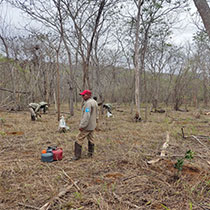
Another part of the jigsaw can be found in Oregon, USA.
Oregon Biochar Solutions produces high-quality biochar, mainly sourced from forestry waste, including fire hazard biomass and forest fire burnt wood.
Removing forest waste material reduces the risk of future fires and puts waste material to productive use. The company also donates some of its revenues to the local fire department.
Bamboo to Biochar
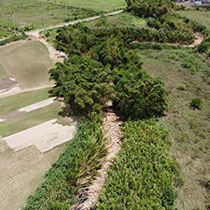
In the southwest of Puerto Rico, not far from the small town of Hormigueros, a startup called Bio Restorative Ideas plans to convert bamboo to biochar on the site of a former sugar cane factory.
Bamboo is a rapidly growing grass and when fallen and broken, particularly along waterways and roadways, causes blockages, flooding and erosion.
Direct Air Capture
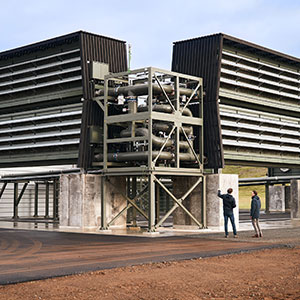
Climeworks is a Swiss company that empowers people and companies to fight global warming by offering carbon dioxide removal as a service via direct air capture (DAC) technology. At Orca, Climeworks’ DAC facility in Iceland, the CO2 is permanently removed from the air by capturing and geologically storing it for thousands of years with Climeworks’ storage partner Carbfix.
Climeworks’ DAC facilities run exclusively on clean energy, and their modular CO2 collectors can be stacked to build machines of any capacity. Founded by engineers Christoph Gebald and Jan Wurzbacher in 2009, Climeworks is on a journey to climate impact at scale. To do so, it strives to inspire 1 billion people to act and remove CO2 from the air.
Supporting carbon removal solutions
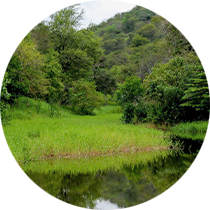
Wakefield BioChar supplies high-quality biochar derived from waste biomass generated by paper mills during their production processes. In normal circumstances, the biochar is burnt to produce energy, releasing the carbon within the biomass into the atmosphere. The revenue provided by the sale of carbon removal certificates by Wakefield BioChar, provides the financing necessary to sequester permanently the biochar from residual biomass for application to degraded land as part of a remediation project agreed with the local and state authorities and the landowner. In this case, the biochar was mixed with lime and used as an amendment to neutralize pollutants, restore soil health and improve drainage. Native plant species were then planted on the remediated land to restore the biodiversity of the site.
Through its funding of carbon removals via Wakefield Biochar, Zurich supports the growth and development of a minority-owned supplier and supports the restoration of degraded land for the benefit of the planet and the local community.
Agroforestry
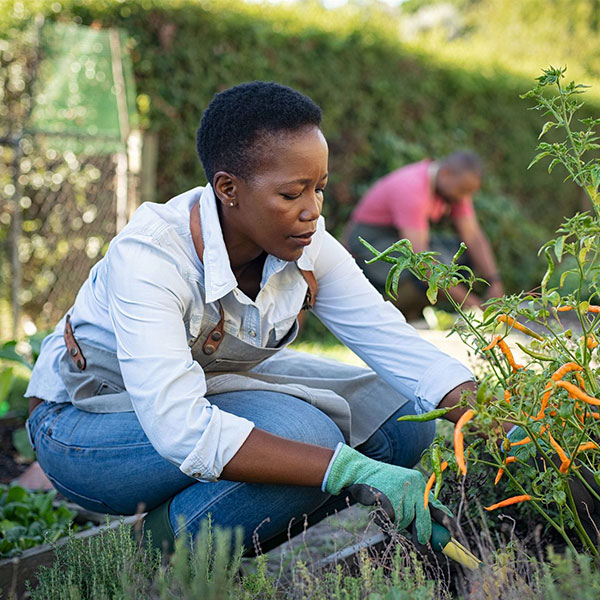
Trees for Global Benefits (TGB) is a long-running carbon removal project in Uganda implemented by the Environmental Conservation Trust of Uganda (ECOTRUST), a not-for-profit conservation organization established in Uganda in 1999 to conserve biological diversity and enhance social welfare by promoting innovative and sustainable environmental management. TGB combines community-led activities to increase carbon sequestration, encourage sustainable land-use practices, and provide farmers with performance-based payments.
TGB combines carbon sequestration with rural livelihood improvements through small-scale, farmer-led, agroforestry projects and ecosystem services. In addition to farmers’ direct payments for planting trees and climate mitigation, the project contributes to income stability, food security, and fuel security at community level.
Enhanced Rock Weathering
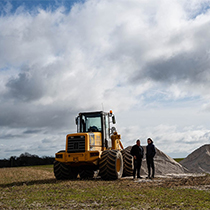
Silicate Carbon Limited (Silicate) is based in Ireland. Their business purpose is to permanently remove carbon dioxide from the atmosphere through the technique of Enhanced Rock Weathering. Silicate’s process involves grinding primarily returned concrete to a fine powder and then spreading this material to agricultural land. Using this material for ERW purposes is an effective use of a waste product that has an abundant supply. It also has a range of other benefits beyond carbon removal as the material has the capability to improve soil fertility and health by adding essential nutrients and regulating pH levels, which enhances crop growth and water retention. This process also supports plant resistance to pests and diseases, reducing the need for synthetic fertilizers, and prevents soil erosion. Additionally, ERW can mitigate ocean acidification by increasing water alkalinity and immobilize heavy metals, reducing their toxicity. These benefits collectively promote sustainable land management, enhance biodiversity, and contribute to overall benefits for people and planet.
Mangrove restoration

The Delta Blue Carbon Project is a significant mangrove restoration initiative aimed at restoring and conserving mangrove forests in the Indus River Delta of Pakistan. This large-scale project is operated as a private public partnership between Indus Delta Capital and The Forest and Wildlife Department of Government of Sindh and successfully combines environmental restoration with sustainable development and climate resilience.
Nellie Technologies
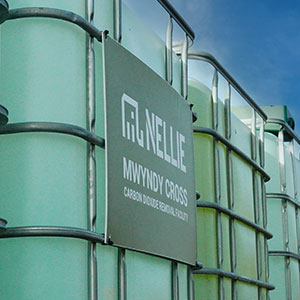
Nellie Technologies Limited (Nellie) is based in Wales UK. Their business purpose is to permanently remove carbon dioxide from the atmosphere by creating a biochar from micro-algae. Nellie have developed proprietary technology to rapidly and efficiently grow micro-algae in a photobioreactor. Once grown the micro-algae can be collected, dried and then used to create biochar which is then applied to agricultural land as a soil amendment. The advantage of Nellie’s approach is the novel use of micro-algae as a feedstock for biochar production which grows rapidly and can be harvested more frequently than conventional biomass sources, micro-algae also has potential to produce higher yields of biochar compared to traditional biomass and does not compete with food crops for arable land since it can be carried out on so called ‘grey belt’ land.
Decisive factors
When evaluating carbon removal projects we use the following key criteria:
Carbon neutrality vs. net-zero
Zurich makes a clear distinction between our net-zero and carbon neutrality commitments.
Carbon offsetting is the practice of continuously reducing CO2e emissions year on year, and then compensating remaining emissions on an annual basis by purchasing certified carbon offsets that avoid carbon dioxide emissions from being emitted elsewhere (e.g., through forest conservation efforts). The certificate must be retired, ideally as close to the purchasing time frame as possible, to ensure a unique and credible carbon neutral claim.
Zurich has been carbon neutral since 2014 and is committed to maintaining its carbon-neutral status while on the pathway to achieving net-zero operational emissions by 2030. This means we will continue to purchase carbon offsets, while over time we increase the proportion of carbon removal credits.
Net-zero will only be achieved starting in 2030 after we have notably reduced our emissions by 70 percent, compared to the base year 2019 levels, and purchased carbon removals in the amount equivalent to our remaining emissions. Carbon removals take emissions out of the atmosphere that have already been omitted.
Our approach to carbon neutrality
We offset our operational emissions1 on an annual basis, which covers our fleet, office energy and waste, business travel, commuting, strategic data centers, printed paper, commuting and scope 3 impacts from energy.
We follow a two-step approach:
- Reduce emissions as much as possible every year through operational efficiency measures such as energy efficiency, reducing business travel, electrifying our car fleet and purchasing renewable power.
- To support further carbon from being emitted into the atmosphere, and to create funding for social and environmental projects, we offset remaining annual carbon emissions by purchasing gold-level certified carbon credits from the Rimba Raya Biodiversity Reserve.
Rimba Raya Biodiversity Reserve
According to information provided by the Rimba Raya Biodiversity Reserve, this outstanding forest conversation and offsetting project keeps more than 130 million metric tons of carbon emissions from being released into the earth’s atmosphere. It is located in Central Kalimantan, Indonesian Borneo, and was the first validated REDD+2 project under the Verified Carbon Standard. These projects support conservation, sustainable management of forests and enhancement of forest carbon stocks. The reserve is one of the largest REDD+ peat swamp forest projects in the world and protects the forest from being converted to palm oil plantations.
The project aims to preserve and protect one of the most highly endangered ecosystems in the world. It uses the financial resources provided by its sale of carbon credits to form a patrolled buffer zone around the Tanjung Puting National Park. The revenue generated from carbon offsets means the project can become an economically viable alternative to deforestation by enabling the sustainable growth of local economies linked to the preservation of the conservation area. These funds are used not only to maintain and restore forest health, but also to support local communities with healthcare, education, economic empowerment and other social and environmental benefits. Rimba Raya is the first REDD+ project in the world to be audited for SDG (UN Sustainable Development Goal) compliance under the SD Vista Standard – achieving the highest possible rating of contributing to all 17 UN SDGs.
The project is managed by InfiniteEARTH, a pioneer in environmental mitigation credits, who developed Rimba Raya as the first validated REDD+ project under the Verified Carbon Standard (VCS) Program, and who helped to develop the “Methodology for Conservation Projects that Avoid Planned Land Use Conversion in Peat Swamp Forests”.
1 Cover-More, Farmers Group, Inc. and its subsidiaries, our joint ventures with Banco Sabadell and Banco Santander, smaller businesses like Real Garant and Orion, third-party vendors as well as our recently acquired Zurich Kotak General Insurance and AIG’s global personal travel insurance and assistance business excluded since they were not reflected in the CO2e emissions baseline in 2019For further details on our methodology, please see the excel providing an overview of operational emissions targets and results, available for download here
2 Reducing Emissions from Deforestation and Forest Degradation in Developing Counties, from the United Nations Framework Convention on Climate Change
The importance of forests
Carbon offsetting and carbon removal to meet our net-zero commitment must work hand in hand. Forestry conservation projects funded by carbon offsets, such as Rimba Raya, have a positive effect on the planet. Therefore, any shift in investment toward carbon removal solutions should not come at the expense of conservation projects, especially with respect to biodiversity loss. As we progress to net-zero, we also have a role to play to ensure forest conversation efforts, for example the Zurich Forest project. We encourage other companies committed to net-zero to consider diverse approaches to carbon removal, considering both technology solutions and nature-based solutions, while also maintaining support for the preservation of existing forests.
Outlook
Zurich aims to be transparent about how it selects its carbon removal solutions and it regularly reviews project evaluation criteria. By sharing information and knowledge about projects, developers can align to the needs of like-minded companies committed to net-zero.
Zurich is continuing to look at other solutions to diversify our carbon removal approach. By creating a new revenue stream for carbon net-negative industries to enable them to build and scale rapidly, we are cautiously optimistic that we have laid the groundwork for achieving net-zero by 2030.

